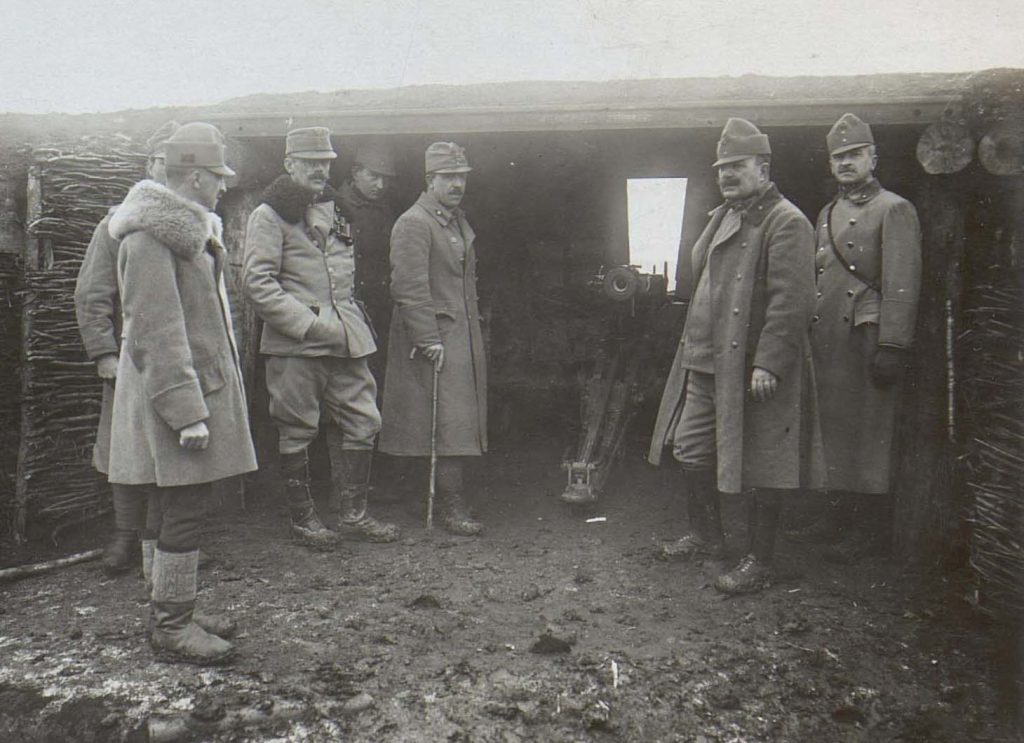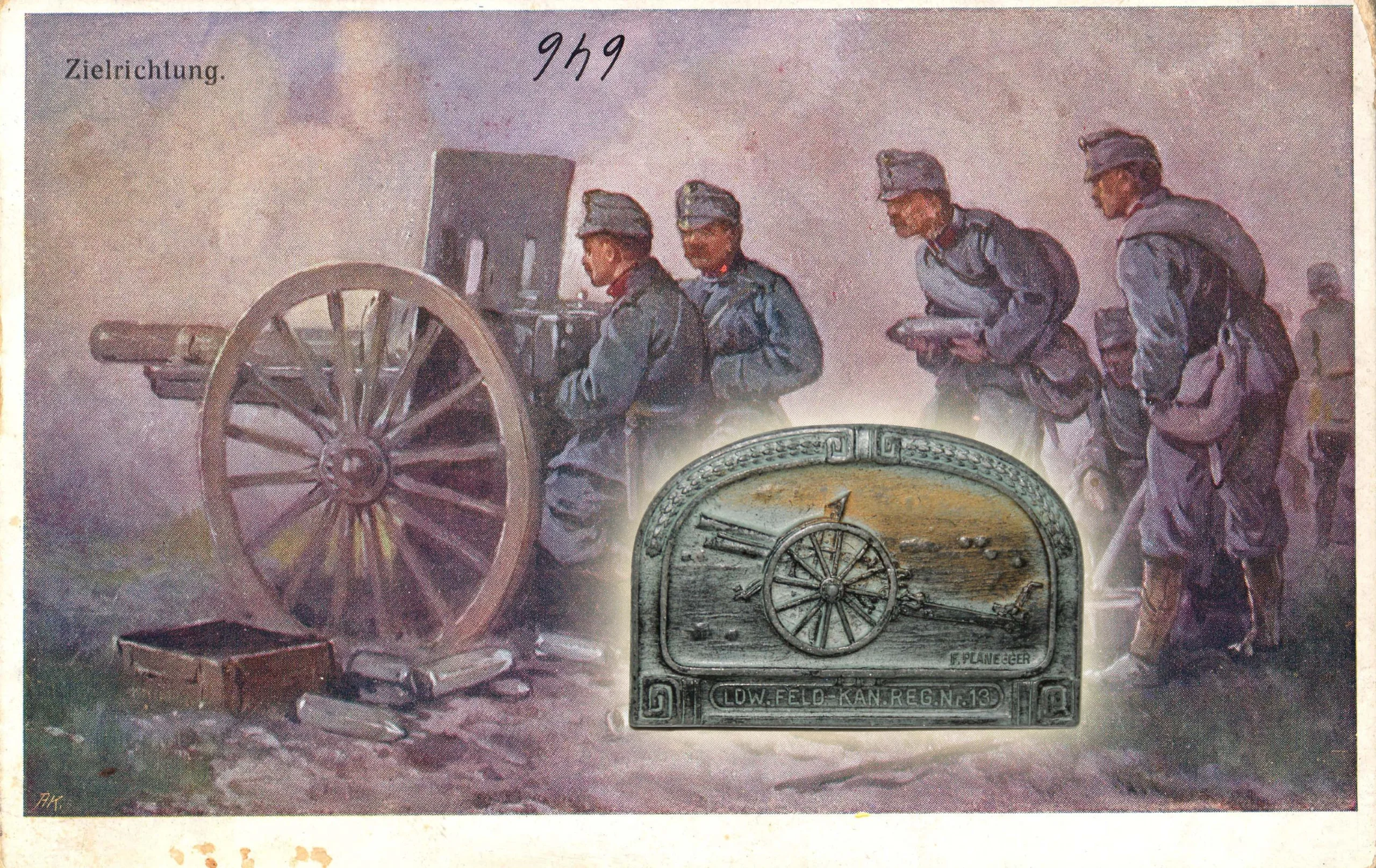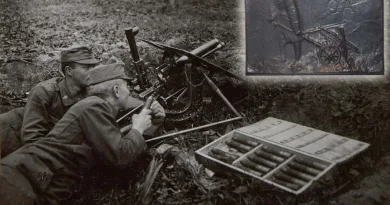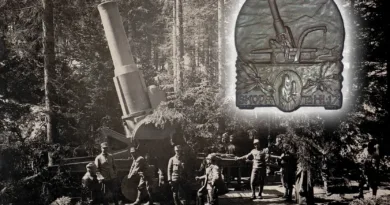M 5 and M 17 8 cm field gun
In many respects the artillery of the Monarchy was not modern at the beginning of the Great War. Compared to the 30.5 cm mortar, the high-tech weapon of the time, smaller caliber guns were rather obsolete. This was especially true of the field guns used. The 8 cm M 5 field cannon fell short of similar weapons of the time already during its development. Its main shortcoming was the bronze-cast gun barrel.
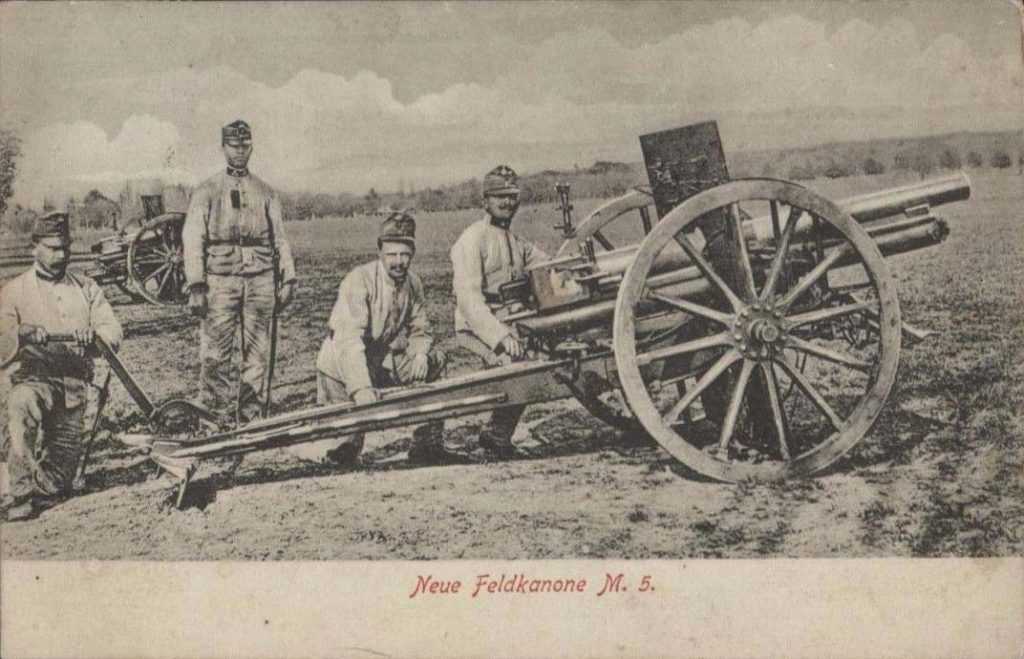
In 1915, a new 8 cm gun was developed at Skoda Industries to replace the M 5 gun. It was commissioned in 1917. The M 17 8 cm field cannon already had a steel gun barrel. Its weight has been significantly reduced due to the use of more modern materials. It has become suitable for the reception of sequenced loads.

The Kappenabzeichen of the artillery regiments often include gun depictions. Perhaps the most life-like image is the one of the 13th Landwehr field cannon regiment. This is an M 5 cannon, best known for its narrow gun support and mounted seats, as well as the stairs mounted on the front of the gun shield. The pre-war postcard shows the main structural elements of the gun. A picture from the museum exhibition shows the new M 17 gun. You can clearly see the wider gun support. This picture was taken of a gun preserved at the Museum of Fort Sill, Oklahoma.
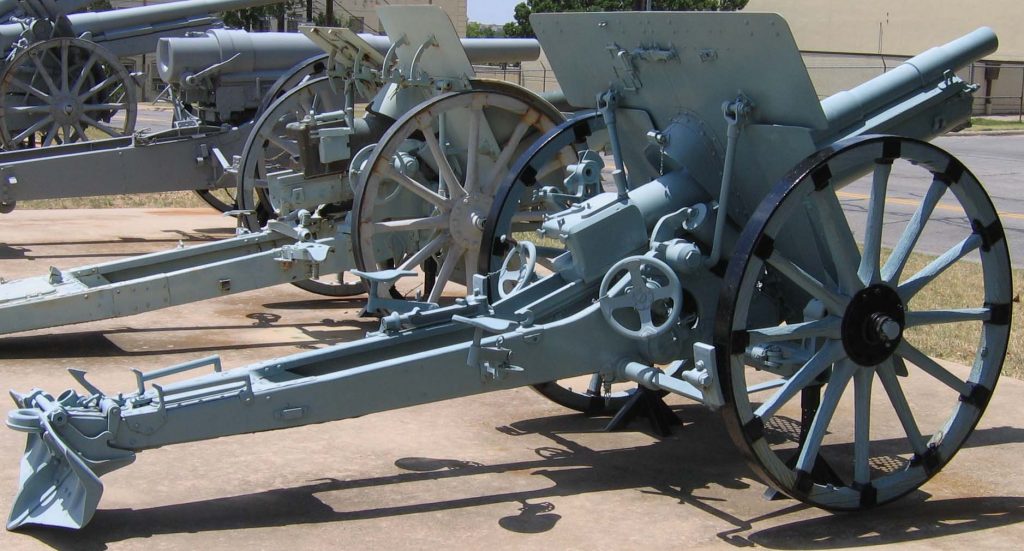
The field cannons were primarily used to fend off infantry attacks. The most frequently used projectile was the shrapnel. This is a timed projectile that detonates in the air above a specified point. The steel balls contained in the bullet are then scattered in the area. The shrapnel bullets were able to cause serious injuries. Yet, relatively simple protective measures were able to minimize their impact. Some show off authors of war memoires often refer to it as hail. The bullets didn’t even penetrate the backpack skin. In the last image, we see a field gun built into a trench position. The picture was shot sometime in March 1916 during a front visit of the Hungarian minister of war baron Hazai. On the right side of the picture you can see the minister in front, on the left is the commander of the 308th Honvéd Infantry Regiment, colonel Géza Dobák.
